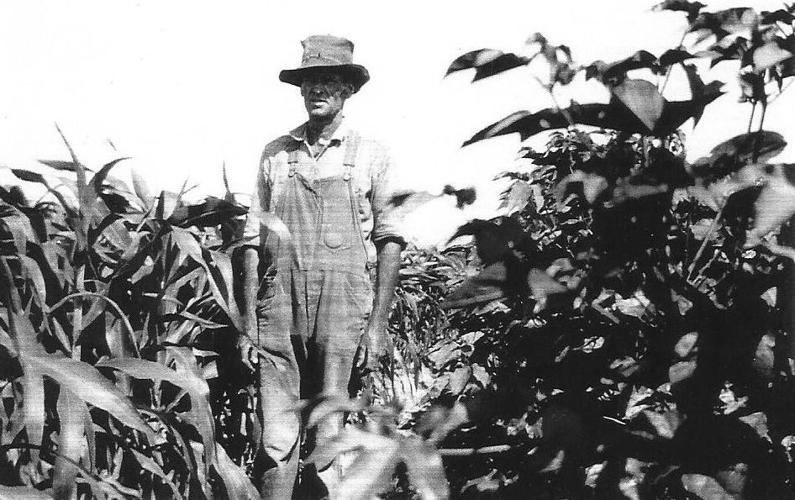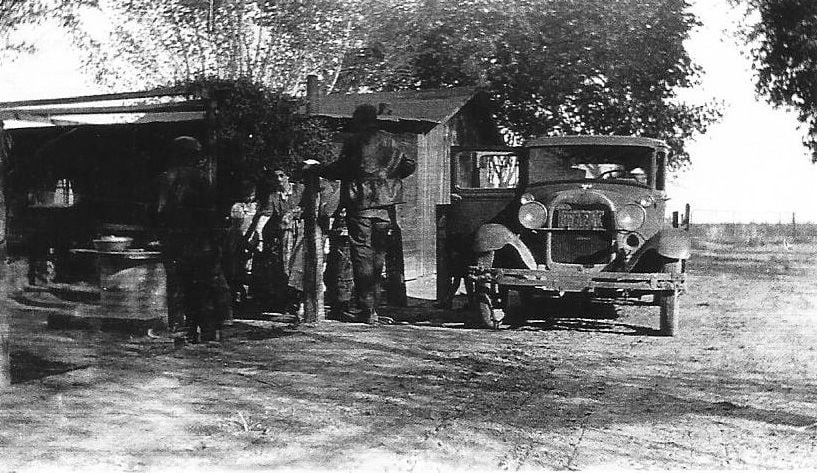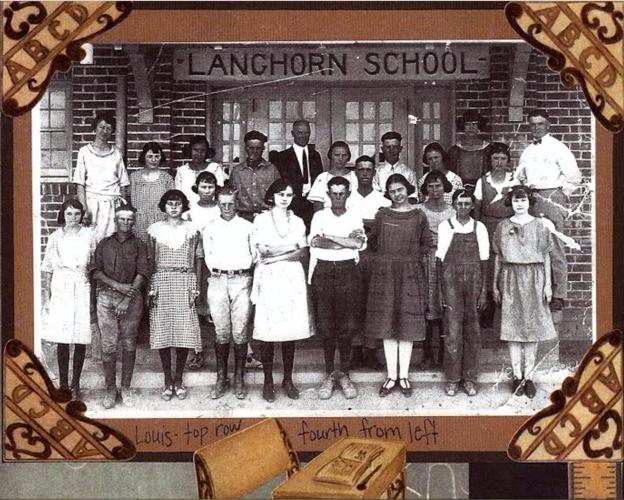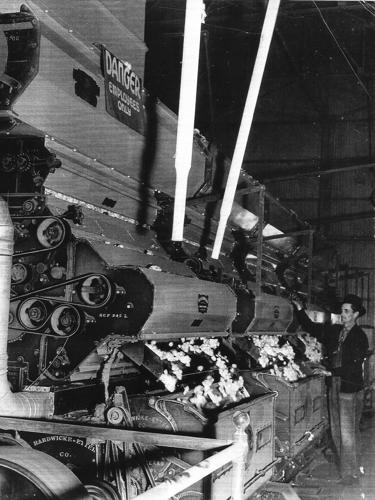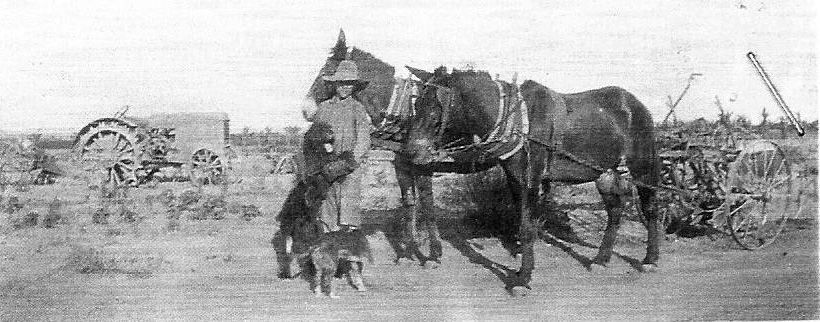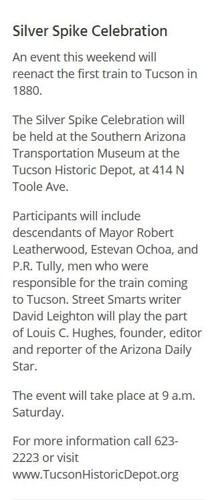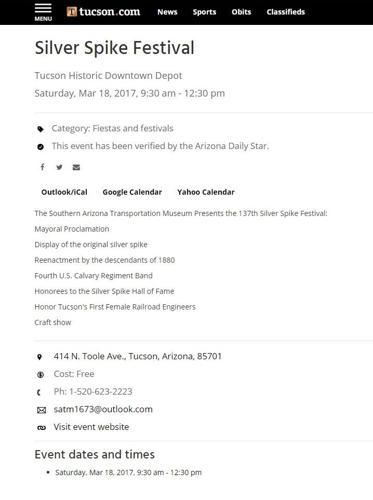Anway Road is named for a pioneer family that settled in 1919 in the farming community known as Postvale — which later became Marana — and went on to amass acreage, dairy cows, local lore and a houseful of collectibles.
The first Anway to arrive in Tucson was Charles B. Anway, who moved here from Ventura, California, for his health after contracting tuberculosis.
Soon after, in 1919, his nephew Louis E. “Louie” Anway and family followed, landing in Postvale. The area’s name was derived from Edwin R. Post, who had acquired a large amount of land, founded the Valley Farms Water Co., started selling land to agriculturists and contracting to provide the water.
Louis Anway had been born in 1905 in Ignacio, Colorado, to William E. and Clara Anway. His sister, Ila, was born a couple years later, but they lost their mother around the same time.
The family relocated to Ventura, California, before moving to Arizona, where Louis received his education at Postvale School and Langhorn School and played basketball on the school team. One of his classmates was his future wife, Erma Goree.
On Oct. 19, 1920, Louis’ long-widowed father married Orpha Ralston, who, according to family history, was a former Harvey Girl who worked at the Grand Canyon.
Orpha Anway would spend many years involved in the Postvale Co-operative Women’s Club, including as president. The club was involved in many civic activities, including petitioning the government to change the local post office name from Postvale to the area’s first known name, Marana. Although the group renamed itself the Marana Women’s Club, it would be a few years before the area name Postvale fell out of popular use.
As in other communities in the West, justice was swift and merciless in Marana. In June 1925, William Anway and W.L. Holland threw a man, considered a general nuisance in the community, into an irrigation ditch. This “ducking party” was done to encourage him to find a new place to reside, but cost each man $10 in court.
Louis and Erma, after courting for a few years, moved to Ventura, where they wed on Dec. 5, 1925. Their first child, Edward, was born in 1926 in California. The next year they came back home to Marana. Two more sons, Roy and Dick, were born to the couple in 1928 and 1930, and their final son, David, was born many years later. In 1937, Erma Anway began driving the school bus for Postvale School students.
In 1938, William and Louis held a special Thanksgiving dinner for the remaining pioneer families of the original group that settled there in 1919. Besides the Anways, Mr. and Mrs. Tom Smith, Mr. and Mrs. P.A. Hulse and W.E. Hardin (or Harden), with his daughter Miss Mildred Hardin, were still living there.
In August 1943, Louis Anway, then a tenant farmer at Cortaro Farms, attended a meeting regarding the labor shortage due to the war. It was explained to him and other cotton farmers in the Marana area that due to the shortage, Italian prisoners of war who had been captured in North Africa and were being held in the Florence prison camp would be used to fill the gap. A camp and mess hall for the prisoners and guards was set up at Cortaro Farms and by October 1943 the Italian soldiers were picking cotton in the fields. This program of using prisoners in the fields is believed to have lasted until the war’s end.
According to David B. Anway, his grandparents Louis and Erma both told him several times that a temporary work camp existed for Japanese prisoners of war or Japanese-American internees on what is now the southwest corner of West Kirby Hughes and North Wentz roads. They were marched every day down present-day Wentz and present-day Marana Road in front of his house, which was at 13831 W. Marana Road. While no further evidence could be found to validate the camp’s existence, it’s possible Japanese-American internees from the Gila River Relocation Center were given permission to do seasonal farm work in Marana.
In 1947, Louis Anway looked at land in the Avra Valley, just west of Marana, which was a large cattle ranch owned by Peter and Minnie Manville (namesakes of Manville Road). He purchased four sections and he and his three oldest sons began farming it.
After buying the property, Louis realized the trip to his land in Avra Valley was extremely long and could be shortened by a new road. Using a Caterpillar with a blade, he carved a dirt path that ran from El Paso Natural Gas Road (now Avra Valley Road) to Manville Road. Later on, Ed Anway and Andrew Segundo worked to make the road straighter and shorter.
On Aug. 6, 1951, the Pima County Board of Supervisors officially established Anway Road. Around the same time the county established Tucker Road, named for Pat and Sally Tucker, whose farm was at Anway and Tucker roads.
Louis Anway was the first known person to drill an irrigation well in the Avra Valley, till the soil and make the valley prosper, drawing other farmers.
One by one, the three eldest children of Louis and Erma Anway married and moved their families to Avra Valley. Louis, Erma and their youngest, David, followed in 1953. One thing Erma was sure not to leave behind during the move was her rare collection of well over a thousand salt and pepper shakers. She had begun collecting them in 1939 and had sets from China, Iceland, Canada, Mexico and at least twenty-eight U.S. states, with some of them being a ball and glove, cat and fiddle and slot machines from Carson City, Nevada.
In 1958, Louis Anway met Don Burgess and decided to purchase his milk cows from St. David. Louis and Ed became partners and Avra Valley Dairy was created with about 60 bovine, just east of North Trico Road and West Manville Road. The herd grew to about 450 milking cows, said to have been the biggest Brown Swiss herd in Arizona. Louis also farmed about 800 acres of land in the valley and 100 acres in Marana itself.
About eight years later, around the time his health began failing, Louis sold his livestock to Shamrock Dairy, while his son David bought Avra Valley Dairy. Louis died in 1980.


